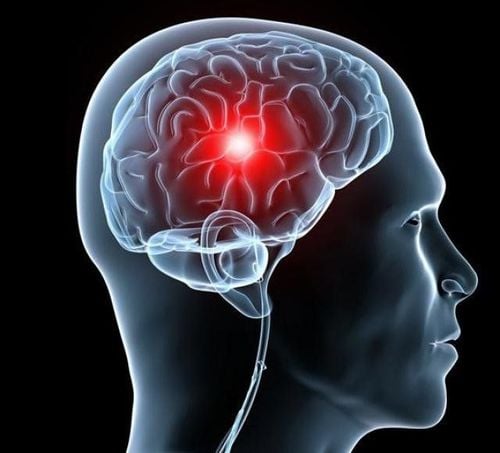This is an automatically translated article.
Posted by Specialist Doctor II Pham Tien Ngoc - Emergency Resuscitation Department - Vinmec Central Park International General Hospital
Cerebral venous thrombosis is a condition when the venous system is embolized, causing circulatory stagnation, leading to increased intracranial pressure, edema and cerebral hemorrhage. Clinical manifestations in patients can be: Headache, convulsions, weakness in limbs, papilledema, focal nerve damage, abnormal movement, disturbance of consciousness with varying degrees and severity. especially coma,...
1. Laboratory tests commonly used in diagnosis
Some of the laboratory tests commonly used in the diagnosis of cerebral venous thrombosis include:
Blood and cerebrospinal fluid tests: The white blood cells increase in the presence of an acute infection. Cerebrospinal fluid has: 75% of cases have leukocytosis, 50% have changes like viral meningitis, 30% have changes like purulent meningitis. Computed tomography of the brain: Helps rule out other lesions such as: brain tumor, brain abscess or associated lesions such as: subdural pyelonephritis and sinusitis,... Magnetic resonance: Resonance imaging Conventional magnetic resonance imaging combined with intravenous magnetic resonance for high sensitivity and specificity. This is the best noninvasive technique for the diagnosis of cerebral venous thrombosis and is considered the gold standard, which can replace invasive cerebral angiography. Currently, magnetic resonance imaging is used as the primary diagnostic modality in cases of suspected intracranial venous thrombosis.
2. Treatment of cerebral venous thrombosis
Treatment of cerebral venous thrombosis with: Antibiotics, anticoagulants, thrombolytics, corticosteroids and surgery (carefully consider each case). Specifically:
Antibiotics: Use early, high dose, broad spectrum in case of cerebral venous thrombosis suspected due to complications of neighboring infections (otitis mastoid, otitis media, ...) or spreading. disseminated (meningitis, sepsis)... Anticoagulation: Some opinions support the use of anticoagulation in the treatment of cerebral venous thrombosis, to prevent the development of blood clots and prevent venous thrombosis. deep or pulmonary embolism. Most studies show that anticoagulants are safe and effective. The duration should last 3 months, if there are no complications, it should be switched to oral form. There was no difference in efficacy with unfractionated and subcutaneous heparin. It can be used in two ways: Option 1: Administer intravenous unfractionated heparin at a dose adjusted so that thromboplastin activation time is twice as high as before treatment. Method 2: Using low molecular weight Heparin injected under the skin.

Điều trị huyết khối tĩnh mạch não bằng Heparin trọng lượng phân tử thấp tiêm dưới da
Thrombolysis: In some cases of large, widespread, worsening thrombus, increased intracranial pressure despite anticoagulation, thrombolysis is considered indicated for treatment. cerebral venous thrombosis (using a thrombectomy or thrombolytics). Corticosteroids can reduce inflammation, reduce orbital congestion and prevent adrenal insufficiency in the treatment of cerebral venous thrombosis. Surgery: Drainage of pus from the sphenoid sinuses, facial sinuses, mastoid bones after using strong antibiotics, high doses. To protect health and prevent complications, when detecting symptoms of cerebral venous thrombosis, patients need to go to the hospital immediately to be examined by a neurologist. Currently, Vinmec International General Hospital is one of the most prestigious medical treatment units for neurological diseases in Vietnam. The Department of Neurology at Vinmec has the function of examining, diagnosing, consulting and treating diseases related to neurological factors, including headaches, vestibular syndrome, cerebellar syndrome, dementia The typical method of the department is to use intravenous and arterial fibrinolytic drugs for stroke cases, along with the combination with paraclinical means such as electroencephalography, electromyography. ST Scan, MRI,...
Neurological examination at Vinmec, customers will be:
Examination by a team of highly qualified and experienced experts such as: Doctor Nguyen Thi Minh Phuong , Doctor Bui Ngoc Phuong Hoa, Doctor Vu Duy Dung ... State-of-the-art equipment, comparable to major hospitals in the world: The most modern silent magnetic resonance imaging machine in Southeast Asia; The 16-sequence PET/CT and SPECT/CT systems help in early detection of neurological damage even when there are no symptoms of the disease. Apply the most advanced intensive treatment techniques in the world in treatment.
Please dial HOTLINE for more information or register for an appointment HERE. Download MyVinmec app to make appointments faster and to manage your bookings easily.













